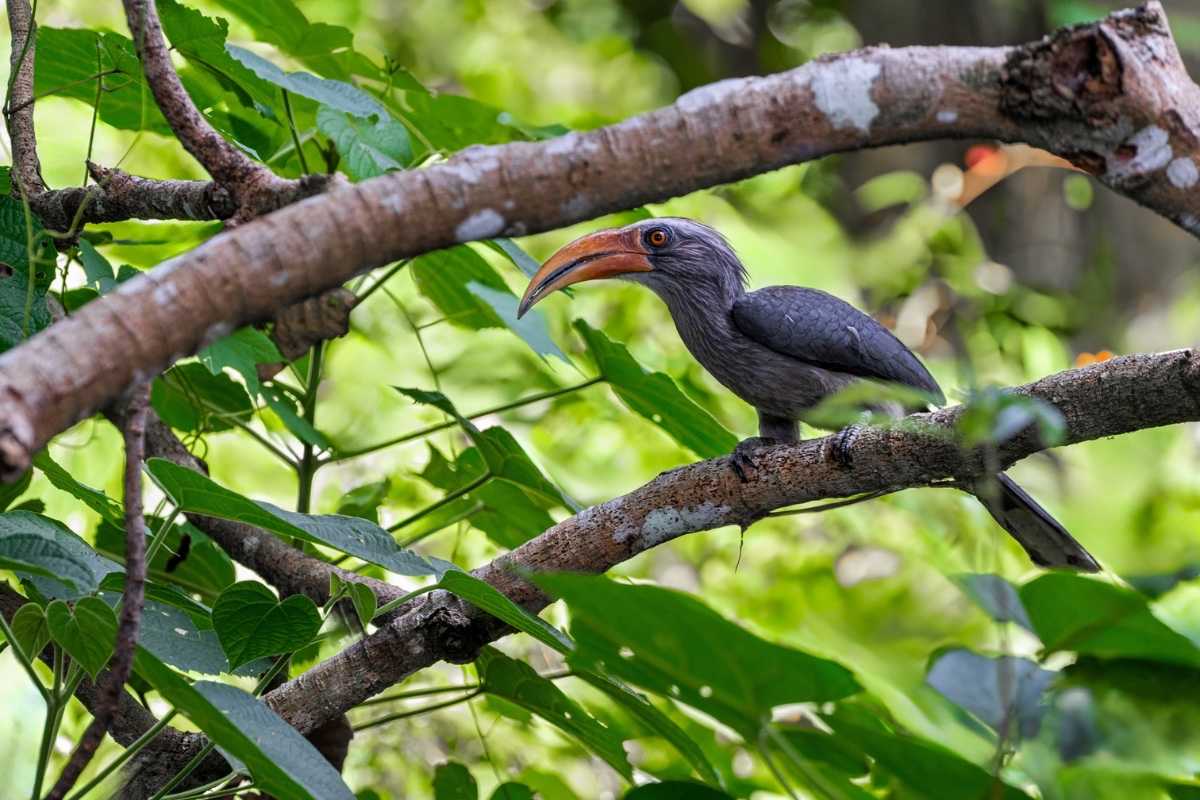An endemic hornbill of southern India’s Western Ghats and surrounding hills is the Malabar gray hornbill (Ocyceros griseus). Although they have a big beak, they don’t have the casque that some other hornbill species do. They are mostly found near plantations that grow coffee, rubber, or arecanuts, as well as in deep forests. They forage for figs and other wild foods while moving around in small groups or pairs. People in the area recognize them by their loud cackling and laughing call.

Feathered Majesty The mighty hornbill enjoys its peaceful perch.
The Malabar grey hornbill, though large, is the smallest Asian hornbill, measuring 45 to 58 cm (18 to 23 in) long with a 23 cm (9.1 in) tail. Its bill ranges from pale yellow to orange. Males have a reddish bill with a yellow tip, while females have a yellow bill with a black stripe and a black base on the lower mandible. A wide, whitish superciliary band extends from above the eye to the neck. They move energetically on outer branches of fruiting trees and fly with strong flaps and glides.

Graceful grooming Grooming its feathers, the hornbill stays vigilant.
They have brown-grey wings, black primary flight feathers with white tips, and a white carpal patch. They have brown-grey wings, black primary flight feathers with white tips, and a white carpal patch. The Indian grey hornbill, common in surrounding plains, has a prominent casque and a white trailing wing edge in flight. The Malabar grey hornbill has a grey back, cinnamon vent, striped grey underparts, and a long blackish tail with a white tip. Young birds have a dull yellow or white iris. Young birds have a dull yellow or white iris.

Natural sentinel The Malabar hornbill observes, eyes fixed upwards.
January to May is the breeding season. As secondary cavity nesters, they cannot dig their own nests, so they seek trees with large cavities. The species favored nest places with huge trees, according to a study conducted in the Anaimalai Hills. Large trees with heart-rot-induced hollows where a branch had fallen off were typically where the nest holes were located. By caulking the cavity’s entrance with cement derived from her waste, the woman imprisons herself inside.

Nature’s Observer Focused and calm on the branch
Afterward, the female undergoes a full molt and lays three or sometimes four white eggs. A small nest opening lets the female urinate and receive food from the male, who feeds both her and the chicks. Their diet includes reptiles, insects, berries, and small rodents. The male taps the tree to attract the female, then regurgitates food, moves it to his bill’s tip, and gives it to her.
Copyrights : All the photos and texts in this post are the copyright of John Thomas and Creative Hut Institute of Photography and Film. Their reproduction, full or part, is forbidden without the explicit approval of the right owners.


